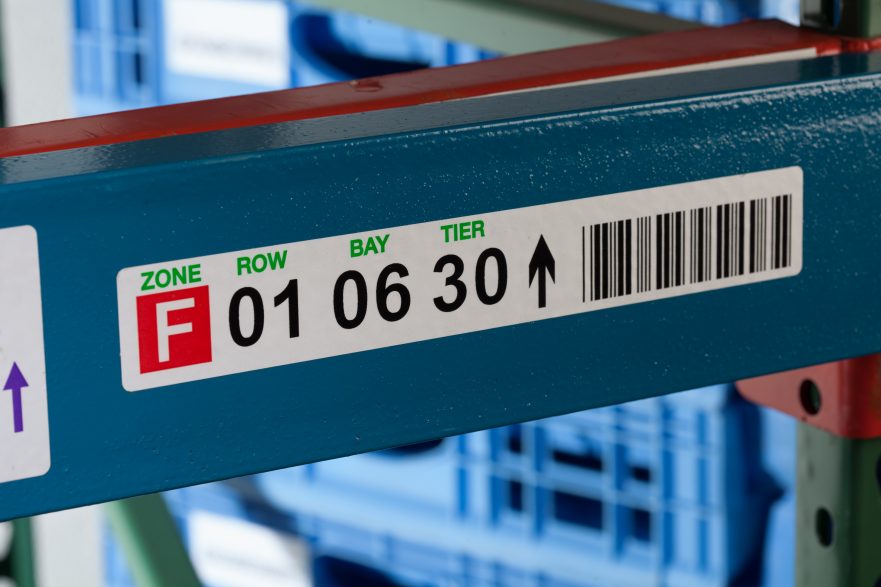Barcode ID labels have helped change the efficiencies of the modern warehouse. But they are only as effective as your layout.
Barcode label products, including RFID smart label solutions, have changed the way companies manage products. Inventory management is easier, product identification is simplified, locating the product is quicker, shipping the product is easier, and shrinkage has been minimized due to barcode technology and systems. But the technology works only when warehouse racks that rack identification label products are attached to are organized in ways that make sense. With that being said, here are some tips and considerations to keep in mind when planning an efficient layout for your warehouse.
Preplan Your Warehouse Layout
It’s important to make sure your warehouse layout is preplanned prior to placing identification label products on racks, parts, and containers. Here is the most common warehouse inventory hierarchy that defines product location and identification:
- Aisle Number
- Vertical Section Identification
- Level Number
- Pallet Position (if storing multiple pallets on a given rack position)
Think of your product positioning as if each item is a treasure and you are trying to make it as easy as possible for someone to locate it. This is the foundation and reason for product positioning in your warehouse.
Optimize Your Location for Speed
How about two seconds? Warehouse management best practices states that, if optimized correctly, every rack identification label in your warehouse should be in position to be scanned in two seconds. Height of the racks, width of the aisles, and positioning of the operator can all factor in to lagging scan times. Position the items where they make the most sense for productivity, but also keep ergonomics in mind. Make sure that the operator won’t have to strain or twist in order to scan barcodes.
Test Your ID Labels and Scanning Equipment
First, check your scanning equipment for information to determine the maximum scan distance from the barcode for a successful reading. Also, know what sort of lighting is required for accurately scanning the barcode information. Determine if there are refraction issues to consider and whether there are any label product placement issues. Make sure the equipment being used will be effective before committing to a warehouse identification label layout. One common error is printing a barcode with a reflective or clear background. Oftentimes, after it’s too late, companies find that the barcodes won’t scan properly.
Choose a label product supplier who has experience with barcodes, who can test the barcode graphics beforehand to assure that the barcode can be printed and scanned successfully, not only for the proper background but also for the quality of the barcode or QR code (symbology). Also, many companies require specific barcode quality characteristics (ANSI Grade) to assure their operations run smoothly, thus reducing or eliminating downtown. Check with your barcode label products company to confirm that they can produce the highest quality labels (ANSA Grade A) if, in fact, your company requires this quality label solution.
Choose an Effective Material for Your ID Labels
Not all ID labels are created the same. Some label product materials (substrates) have higher resistance to heat and cold, some are engineered to handle humidity and moisture better than other materials, and some are designed to retain a sharp image over an extended period of time. One of the biggest challenges with label efficiency lies with worn out and hard to scan labels. Choose a label material that will ensure maximum scan life. For label products used in harsh environments or subjected to possible scratches and abrasion, such as from forklifts, there are laminates that can be applied to protect the barcode and add to the life of the label product.
What’s Next?
Still wondering what needs to be done to get ready for labeling your warehouse? The Kennedy Group, an Inovar company is here to make sure your layout and equipment works to optimize your particular requirements. Contact us today with your challenges and any questions you may have. Let us know how we can help match your needs with our state-of-the-art labeling solutions.


